|
|
 Jen Jen |
 |
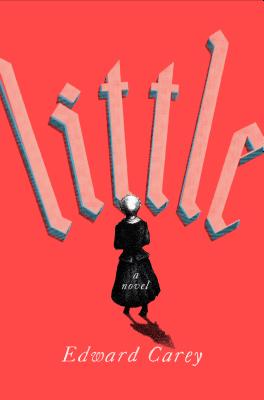
|
 |
Little
Edward Carey
This has been one of my favorite reads of 2018!
Little is a novel set in the second half of the 1700s, mostly in France. A small girl named Marie is born to poor parents. Her father is in the Army and is absent for the first five years of Marie's life. When he does return, according to Marie’s mother he’s not the same man he was before. Soon after, he dies. (I promise that's not a spoiler. Father dies by page eight of the novel.) Being economically challenged, Marie's mother decides that she and Marie will go to work for Dr. Curtius. Curtius and Marie (aka Little, because of her small size) become close and form a sort of father-daughter bond. Dr. Curtius teaches Marie the art of wax sculpture. Soon, for reasons I won't reveal, they are forced to flee and go to Paris. Once there, they wind up living with the Widow Picot and her son Edmond. The book follows Marie throughout her life. It’s set during the French revolution, which is fascinating. The narrative has an old-fashioned feel to it that is charming (the chapters are often subtitled, ie: "Chapter Eight: Which is a worrisome one.") Children are not coddled (and in some cases are downright abused), terrible and violent acts occur in Paris (there's a reason for saying the streets ran red with blood), and yet the reader completely falls in love with and roots for Little Marie. One of my favorite parts about this novel is that the novelist has illustrated it with simple, ink drawings. There are a lot of them and they give the reader a sense of being a little pampered. The setting is distant and while not completely unknown, most of us are not intimately familiar with it. The characters and plot are quirky and weird and wonderful. Newsday said of Carey's writing, "If [this] were film, he would be Tim Burton" and that's pretty spot on. |
| |
|
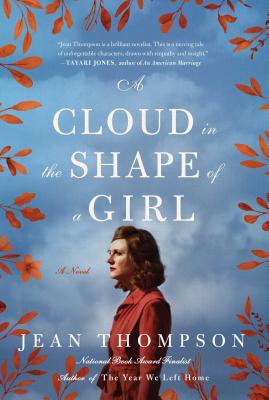 |
|
A Cloud in the Shape of a Girl
Jean Thompson
This novel is a family saga tale, spanning three generations of women. It begins with Evelyn during World War II, moves on to Evelyn's daughter Laura, and finally to Laura's daughter Grace in present time. The book is set in a Midwestern college town. Evelyn marries late and never really takes to motherhood. Laura resents this and winds up marrying a man similarly distant. Grace finds herself trying to be the peacekeeper of the family and its history while also discovering who she is and what she has to offer. Each of these women struggles, succeeds, and at times unknowingly repeats family history. While each woman is different from the others, I could relate to each. I alternated between rooting for each of them and wanting to reach through the pages and shake each in turn. This is the kind of book that a book group could completely sink its teeth into and have discussions of real depth. I listened to this gem on Libro.fm. |
|
|
|
|
|
|
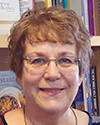 Sally Sally |
|

|
 |
All the Wild Hungers
Karen Babine
A while back, Karen Babine was in the store and I asked what she was working on. Her answer intrigued me, but I also thought what she was doing was daunting: combining reflection on her mother’s cancer, her sister’s pregnancy, and her own attempts to nurture her family by cooking for them, while musing about food metaphors encountered during her mother’s treatment.
The book is done, I have read it, and I’m impressed by what Karen has created.
The book is very personal, grounded firmly in Karen’s family, and the landscape where she grew up. (There are many references to the Park Rapids area.)
Babine’s mother was diagnosed with embryonal rhabdomyosaracoma. This rare form of cancer “only” affects children under the age of ten, and appropriate treatment for a sixty-five year old woman wasn’t clear.
At the same time, Babine’s sister was pregnant with her third child. A friend of
mine says, “everything is connected,” and this seemed to be true for Karen as she saw patterns all around her. She found parallels between her sister’s pregnancy and their mother’s illness; childhood church potlucks and the rice pudding her mother was able to eat at Christmas dinner; someone mistakenly planting apple seeds to duplicate a favorite fruit (reproduction of an apple requires grafting) with the rogue cancer cells in her mother’s body, which her doctors referred to as seeds. She examines the connections between food and illness; between cooking from scratch and making meaning from scratch.
Parts of the book are humorous. Karen is a vegetarian and calls meal preparation for her parents “cooking for the carnivores.” She describes in detail roasting a filet mignon and the sauce to accompany it, saying “I…hope it tastes good, because I won’t taste it.”
The book moves through the seasons of the year, as the family goes from fall to a bleak winter and into a spring of hope.
As I said, the book is grounded in a particular family and a particular landscape, yet transcends them to invite the reader to reflect on the “Wild Hungers” in their own experience. |
| |
|
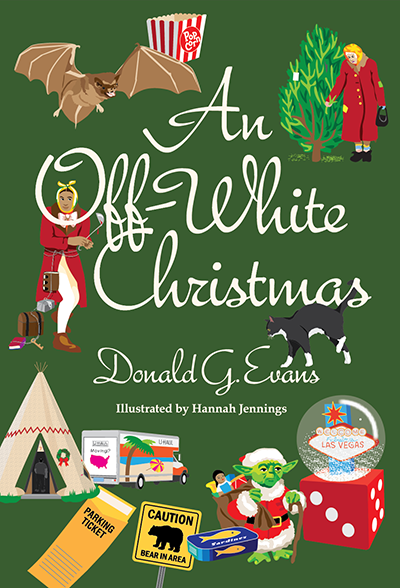
|
|
An Off-White Christmas
Donald G. Evans, illustrated by Hannah Jennings
We received a totally unexpected surprise last month! A package arrived at the store from our web goddess, Hannah. In it was a just released book which she illustrated! Like us, you’re familiar with Hannah’s work. She designed our logo, our website, and turns our monthly newsletter from plain text in a Word document to what you’re reading. But the book showed us more of her talents. The illustrations are wonderful, adding a charming visual component to the contents of the book. They’re found throughout the book AND inside the dust jacket!! Oh, and there is content to the book as well as Hannah’s illustrations. It’s a collection of stories set at Christmas time. They’re not traditional stories, though. Each one presents characters exploring potentially life-changing decisions in the midst of the heightened expectations which the season so often brings. The book is a lovely counterpoint to sentimentality. And did I mention that our Hannah illustrated it?
|
| |
|
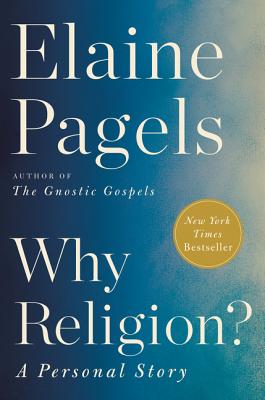
|
|
Why Religion?: A Personal Story
Elaine Pagels
Elaine Pagels is a respected religious scholar whose work has centered on the Nag Hammadi manuscripts, a collection of ancient Christian and Gnostic writings discovered in 1945. Her classic book, The Gnostic Gospels, was selected as one of the 100 best books of the twentieth century by Modern Library. Why Religion? draws on Pagels’ scholarship as she dealt with two devastating losses: the death of her young son and, a year later the death of her husband. It’s an intensely personal book—the account of how she kept on going after these deaths, and slowly worked through grief and loss. Pagels’ personal and professional lives are mined as she explores the spiritual aspects of her own life and experience. The book is written for a general audience, not religious scholars, and I found it deeply moving. |
| |
|

|
|
A House Among the Trees
Julia Glass
When the iconic children’s author, Mort Lear, dies in an accident on his Connecticut estate, his long-time assistant, Tomasina Daulair, discovers he has left her his property and its contents. His will has a number of complicated and contradictory instructions, and the task of making arrangement for everything is a daunting one. Tommy must balance the desires of a number of people, including her brother (the inspiration for Lear’s iconic character), an actor who is to play Lear in an upcoming movie, and a stressed out museum curator who believed Lear’s artistic estate would be left to her institution. The book follows Tommy’s sorting it all out, and includes the back stories of many of the people involved. There’s humor, gentleness, and generosity in Glass’s treatment of it all. |
| |
|
 |
|
The Fork, the Witch, and the Worm: Tales from Alagaësia
Christopher Paolini
This book is sure to be a treat for fans of Paolini’s Eragon trilogy! It’s a collection of stories which begin a year after Eragon left Alagaësia, searching for a place to train new Dragon Riders. He’s found a spot, but is overwhelmed with all the tasks facing him. The stories include a vision from the Eldunari, visitors to Eragon’s new home, an Urgal legend, and excerpts from the memoir of Angela the herbalist. It’s all great fun! I listened to the book on Libro.fm and the reader, who also read the books in the Eragon trilogy, is excellent and perfectly suited for this book. |
| |
|
|
|
|
|
| |
|
|
|
|

Ann |
|
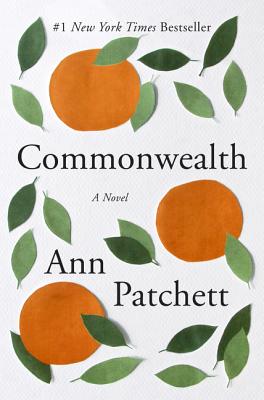 |
|
Commonwealth
Ann Patchett
It all begins when Bert Cousins shows up uninvited and unexpectedly at Frannie Keating's christening party. Bert's decision to crash this particular party results in two divorces and drastic changes in the lives of the Keating and Cousins children. Each year the four Cousins children fly east to spend the summer with their father, step-mother, and two step-sisters. Their time together results in events both humorous and heartbreaking. Commonwealth is filled with profound and perceptive insights into the complex relationships within blended families. These relationships influence the beliefs and lifestyles of the characters well into adulthood. Although Commonwealth is a work of fiction, it is a story that rings true. |
| |
|
|
|
|
|
| |
|
|
|
|

Bob |
|
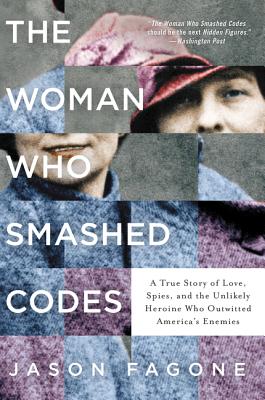 |
|
The Woman Who Smashed Codes
Jason Fagone
As you know, my real long suit is Sci-Fi, so what am I doing reviewing a biography? This one came to my desk because Sally knows I have a weak spot for cryptoquips in the newspaper and have been interested in code-breaking since college. I have to admit that other books I’ve read on this topic were pretty dry. I was surprised by this one in several ways. First, it’s not dry at all, mostly because the author left the codes in the background so YOU don’t have to try to figure them out. Next, the book is actually two biographies….no, make that three biographies: that of Elizebeth Smith, a Quaker school-teacher; her husband, William Friedman, a plant biologist (two very unlikely code-breakers); and the evolution of the whole codes business and agencies from the early 1900 to today. The author does a great job intertwining the code development with two people falling in love and their dedication to their very important jobs, for which they had a real talent. There’s a quote from William about cryptologists “....it’s not necessary to be insane but it helps” that you will understand as you read along through this very interesting book. I particularly enjoyed the part about Sir Francis Bacon (yes, the father of modern scientific inquiry) and the codes that he wrote.
I highly recommend the book. It’s about 400 pages but the last 100 pages are the notes and references you would expect with a biography. Note: Tempted as I was to finish with something encoded, I resisted! |
| |
|
|
|
|
|

Gail |
|
 |
|
|
| |
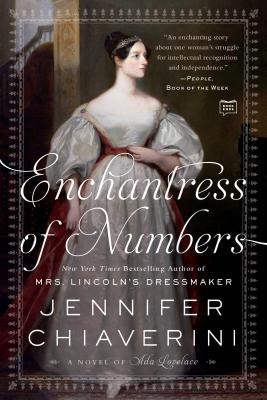
|
|
Enchantress of Numbers
Jennifer Chiaverini
Ada Byron Loveless was the legitimate daughter of Lord Byron, the well-known poet, and this is a fictional account of her life. Ada's mother was determined to save her child from the influence of her mentally unbalanced father by providing her an education in math and science, which was unheard of in the Victorian Age. The author titles each chapter with a quote from Byron's poetry. Many people believe that the algorithm Ada wrote should be recognized as the first computer program. Others give all the credit to her mentor Babbage, who designed an analytical engine. Ada's life was interesting to follow. My one criticism is that the book is very long, so be prepared to spend some time with it.
|
| |
|
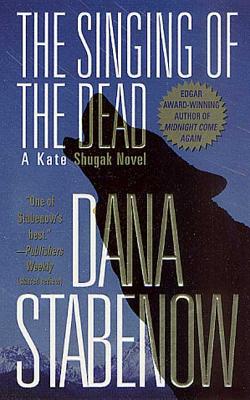
|
|
The Singing of the Dead
Dana Stabenow
Alaskan private investigator Kate Shugak is hired to work security for a native woman running for Alaska state senator. Just as she starts her job, a staff researcher is murdered. It's discovered that he had damning evidence against both candidates. Dana risks her own life to delve back in history to the gold rush days in the Klondike to solve the mystery. The author is a native Alaskan and has written a series of murder mysteries with protagonist Kate Shugak. This is a fast paced story to be especially enjoyed if you are interested in Alaska history and the native population. |
| |
|

|
|
The Second Mrs. Hockaday
Susan Rivers
This title has been a favorite of book clubs. The story is set in the Civil War. Major Hockaday has lost his wife and needs a new one to take care of his son, Charlie. Placidia's father is looking for a husband for her because he is dying and wants her future settled. The marriage takes place and the Major takes Placidia to his home, leaves her there to run things, and goes off to war. Told with letters and diary entrees, Placidia fills in the next 2 years of her life and why, when her husband finally returns, she is on trial for murder! This is a love story, a story of racial division, and how that generation and the next begin to see their world turn upside down and then begin anew. This is Susan Rivers first novel. We look forward to many more. |
| |
|
|
|
|
|
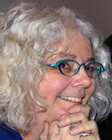
Hannah |
|
 |
|
|
|

|
|
Kingdom of the Blind
Louise Penny
Louise Penny says in the Acknowledgments that when her beloved husband, the inspiration for Armand Gamache, died she knew she was too paralized by grief to ever write about Three Pines again. However, she found herself writing, and discovered that writing helped her. Thank goodness that she didn't leave our friends from the series in the mess that they faced in the last book in the series! Kingdom of the Blind takes us through the ways they coped with that situation, and develops two of the characters in surprising directions.
Note: if you aren't already one of the many fans of Penny's books, start with Still Life. These should definitely be read in chronological order! |
| |
|
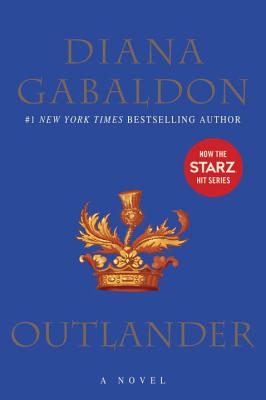
|
|
Outlander
Diana Gabaldon
I looked at PBS’s Great American Books list, the books voted as Americans’ favorites. The top ten were all familiar to me except for Outlander, the series in the number two spot. How could that be? Second most favorite and I never heard of it?! So I decided to check it out. I knew it had time travel, so I looked in the Sci Fi section first, but the series was in the fiction section.
The book starts slowly. About 30 pages in, I decided if I was still bored on page 100 I would quit: no reason to struggle through 850 pages if I wasn’t feeling it. But on page 50 it suddenly happened; she went from 1945 to 1743 bam! 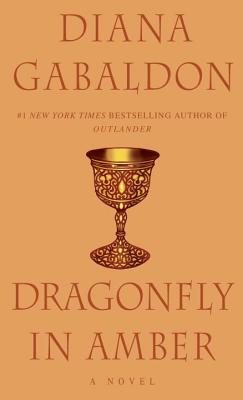 And on page 105 a boy recites the saucy Scottish prayer I remember from my grandfather, and I was hooked. Not too long after that the book gets bawdy; there are parts that make me think it belongs in the bodice-ripping romance novel section. There are parts that are disturbingly brutal and parts that are tender. And on page 105 a boy recites the saucy Scottish prayer I remember from my grandfather, and I was hooked. Not too long after that the book gets bawdy; there are parts that make me think it belongs in the bodice-ripping romance novel section. There are parts that are disturbingly brutal and parts that are tender.
It isn’t Great Literature, but Gabaldon is a first-class story teller. Once you get past the necessary exposition, it’s mighty fun. If you like historical fiction, if you are interested in Scotland, you are going to enjoy this book. And the second one, Dragonfly in Amber. Maybe the series… I haven’t read them all yet.
|
| |
|
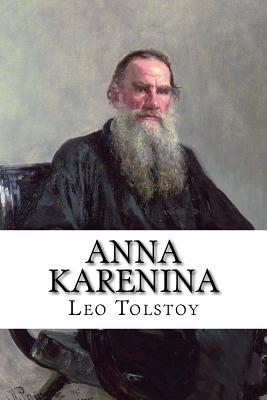
|
|
Anna Karenina
Leo Tolstoy
Why is this book titled Anna Karenina? She’s not the most important character in the novel. There are others who are more interesting. She’s described as self-absorbed and not mentally healthy long before she (spoiler, for the few who don’t already know) throws herself under the train. The book is about how we should live, what is important in the universal human condition, specifically in Russia after the serfs are freed but still work in a feudal system. One of the characters is much like Tolstoy himself. I suppose the book sold better when put up as a shockingly sympathetic story about a fine woman driven to suicide by society, and that’s the story line that got it made into movies and got me to reread it. But this time through, it was everything else in the novel that I found fascinating. I found it to be a very satisfying bait-and-switch. (I read the translation by Constance Garnett.)
|
| |
|
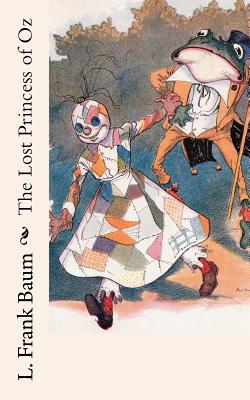 |
|
The Lost Princess of Oz
Frank Baum
Did you know that Dorothy and Toto returned to Oz? She had all sorts of adventures and made many more outlandish friends. Scraps the cheerful Patchwork Girl was featured in a play I saw recently, so I was happy to meet her again in this book. Baum’s creations have such wonderful names: The High Coco-Lorum of Thi, the Czarover of Herku, Button-Bright, the Woozy. In this story someone has stolen all of the most magic objects in Oz, and Dorothy and her friends set out to recover them. Spoiler alert: it has a happy ending. Once as celebrated as Harry Potter is today, the Oz books are a nice break from our stressful world. |
| |
|
|
|
|
|
| |
|
|
|
|

Tim |
|
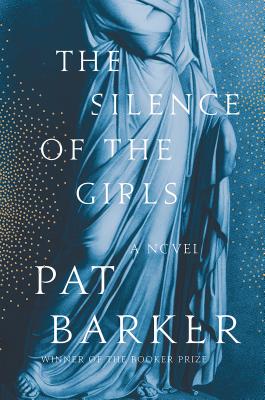 |
|
The Silence of the Girls
Pat Barker
You may know what a sucker I am for historical fiction, especially when it’s set in Greece or Rome. You might also remember, my recently mentioning Circe, and Song of Achilles, both by Madeline Miller. Most people forget that the Iliad opens in the midst of the argument between Achilles and Agamemnon over the possession of a girl, Briseis. The Silence of the Girls is Briseis’ account of her story from the fall of her home city Lyrnessus, up to her leaving for Greece with the victorious Greeks, after the sack of Troy. After finishing this book, I went back, re-read the opening book of the Iliad, and was baffled by the change/transformation of what I was reading; from the venerable lines of antique poetry, into a near breathless account of a brutal war, a decade long, between vain, foolish, greedy men, eager to drape themselves in the bright tinsel of Glory and the false fame of Heroism. It’s well to remember that Odysseus (of Odyssey fame) was the brute who snatched the infant son of Hector from his mother’s arms, and tossed the baby from the walls of defeated Troy. I need to do some serious rethinking. |
| |
|
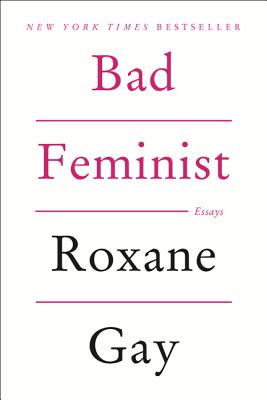
|
|
Bad Feminist
Roxanne Gay
I’ve been reading some feminist authors and this book was recommended because it was clearly written, approachable, and soundly reasoned. I’ve found all of this to be true, as well as finding myself inclined to read pretty much anything the author has written. She has made the necessity of our rethinking our gendered social relations and interactions perfectly self-evident in this collection of essays, all illustrated with contemporary examples: events, film, music, humor and politics. In truth these changes are simply in the best interest of human progress, and like all the changes we need to make, more easily done sooner rather than later. |
| |
|
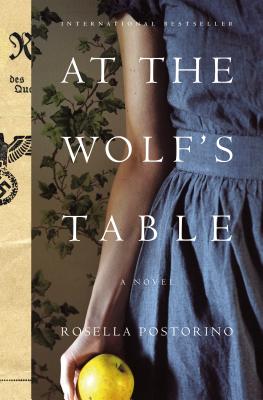 |
|
At the Wolf’s Table
Rosella Postorino
Translated from the Italian by Leah Janeczko
This novel is about a young woman who fled the bombing of Berlin in 1943, and went to her in-laws’ home in Gross-Partsch, in Eastern Prussia. While there, her husband was listed as missing in action, and she’s is conscripted, with nine other young women, to act as Food Tasters for Hitler. She finds herself in the odd position of being almost force fed, while the general population has barely enough food to keep themselves alive. It’s these odd juxtapositions, between two nearly antithetical opposites, that keep cropping up in the story. Aside from the history involved, what interested me were the interactions between characters, some very understandable, and some hardly at all. Yet I couldn’t help comparing the fantasy-like delusions of some, with the nearly same delusional “realities’ we see in present day life.
Note: the paperback of this book will release on January 29.
|
Would you like to be a guest reviewer?
Email Sally at sally@beagleandwolf.com |
| |
|
|
|
|
|
— page top —
|
|
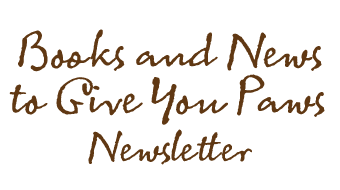
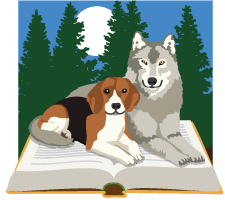
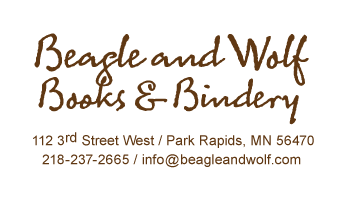
 Jen
Jen
 Sally
Sally






















 And on page 105 a boy recites the saucy Scottish prayer I remember from my grandfather, and I was hooked. Not too long after that the book gets bawdy; there are parts that make me think it belongs in the bodice-ripping romance novel section. There are parts that are disturbingly brutal and parts that are tender.
And on page 105 a boy recites the saucy Scottish prayer I remember from my grandfather, and I was hooked. Not too long after that the book gets bawdy; there are parts that make me think it belongs in the bodice-ripping romance novel section. There are parts that are disturbingly brutal and parts that are tender.